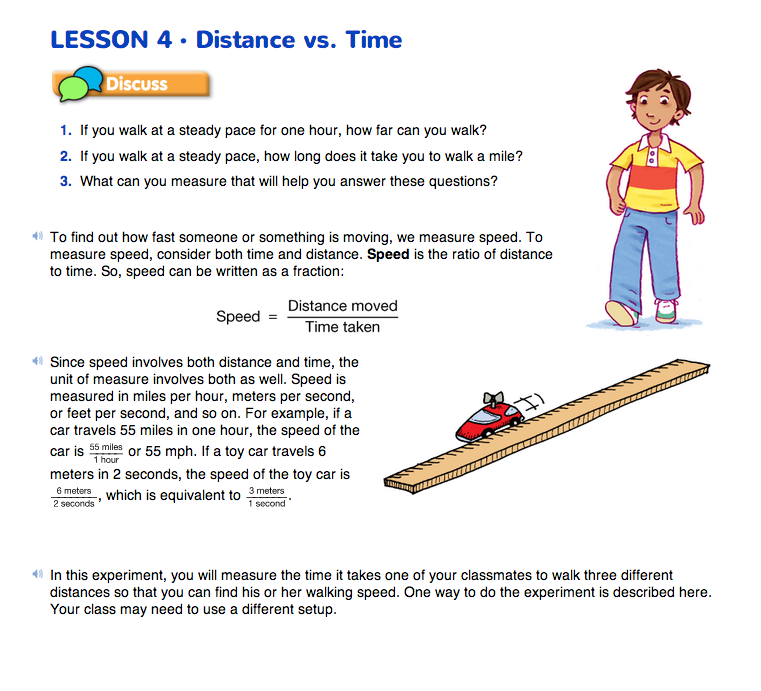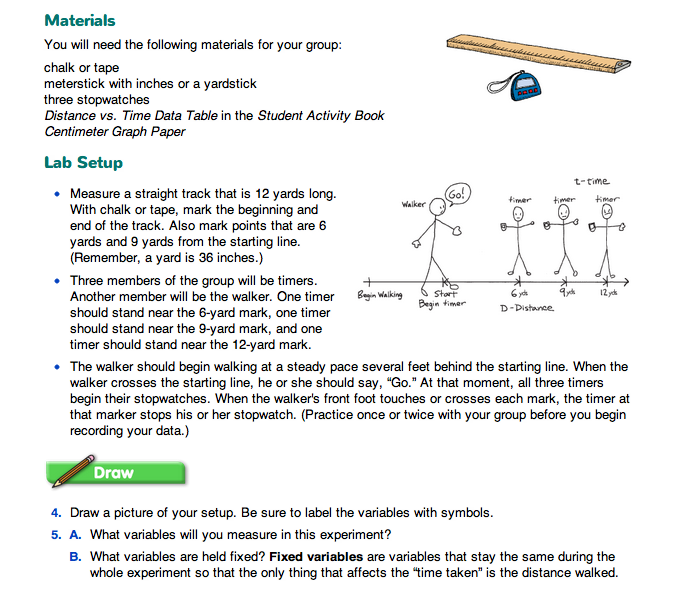Distance vs. Time
Est. Class Sessions: 4Developing the Lesson
Part 1. Define the Variables and Draw the Picture
Define Speed. Read and discuss Questions 1–2 on the Distance vs. Time pages in the Student Guide. These questions provide the context and motivating questions for the lab. They ask students to estimate how far they can walk in one hour and how long it takes them to walk a mile.
Question 3 asks students what they will need to measure during the lab to answer the questions. To help them answer this question, they can read and discuss the definition of speed and the description of the experiment.
Students are probably familiar with the concept of speed at some level, but the idea of measuring speed as a quantity may be less familiar.
Discuss this concept by asking:
Speed is defined as the ratio of the distance moved to the time taken. In the experiment, students measure the time it takes for a fifth-grader to walk three given distances and use the data to find the walker's speed.
Draw the Picture. The directions in the Student Guide tell students to measure out a track that is 12 yards long and to mark distances on the track that are 6, 9, and 12 yards from the starting line. See the drawing in the Student Guide. These distances are the minimum distances students should use. If the distances are shorter, they probably cannot stop the watches fast enough to collect accurate data. However, if you can conduct the lab outside on a playground, in a gym, or in a hallway, the distances can be longer. Encourage students to choose values that are all multiples of one number.
For example, 6, 9, and 12 yards are all multiples of 3, so students can more readily see patterns in the data table. Question 4 asks students to draw a picture of the setup. This is especially important if you choose to use distances for the lab that are different from those in the drawing. Remind students to clearly show the variables they will study in their pictures.
One student in each group is designated the “walker.” This student begins walking at a steady rate several paces behind the starting line. When the walker crosses the starting line, he or she says, “Go,” and timers stationed at each distance marked on the track start their stopwatches. When the walker crosses each mark, the timer at that distance stops his or her watch. The walker should continue walking at the same pace beyond the last mark.
The following questions can be used to lead a class discussion about the variables in the lab:














